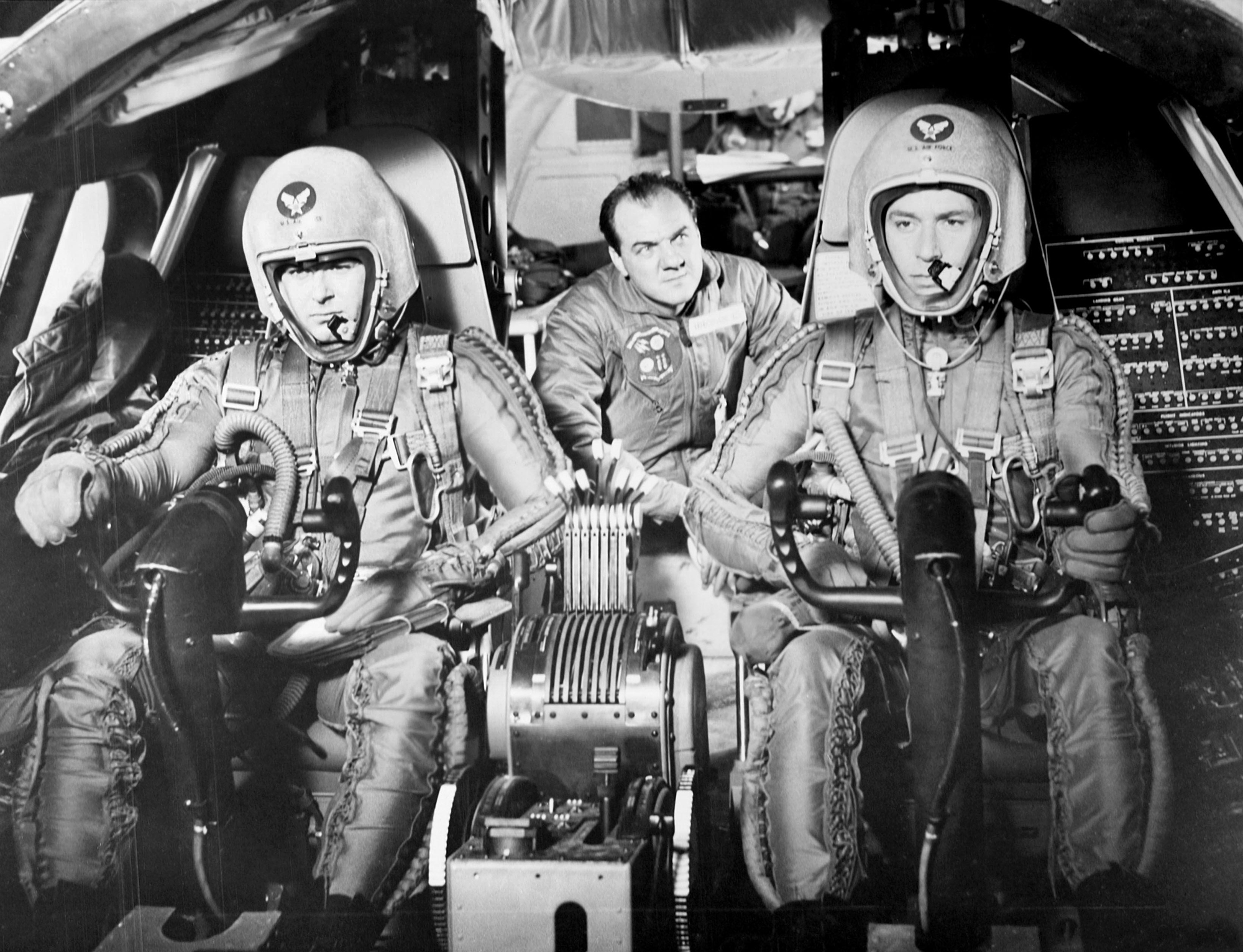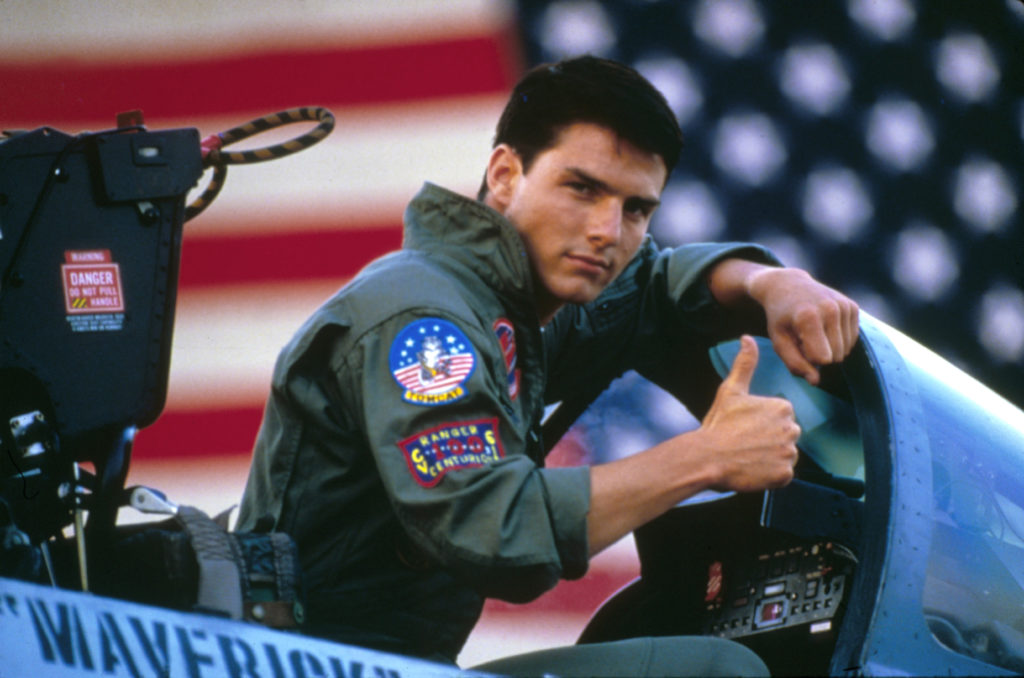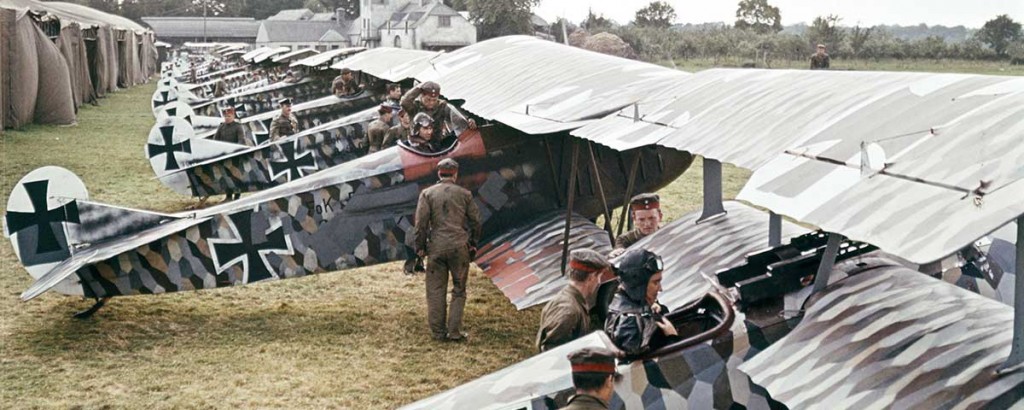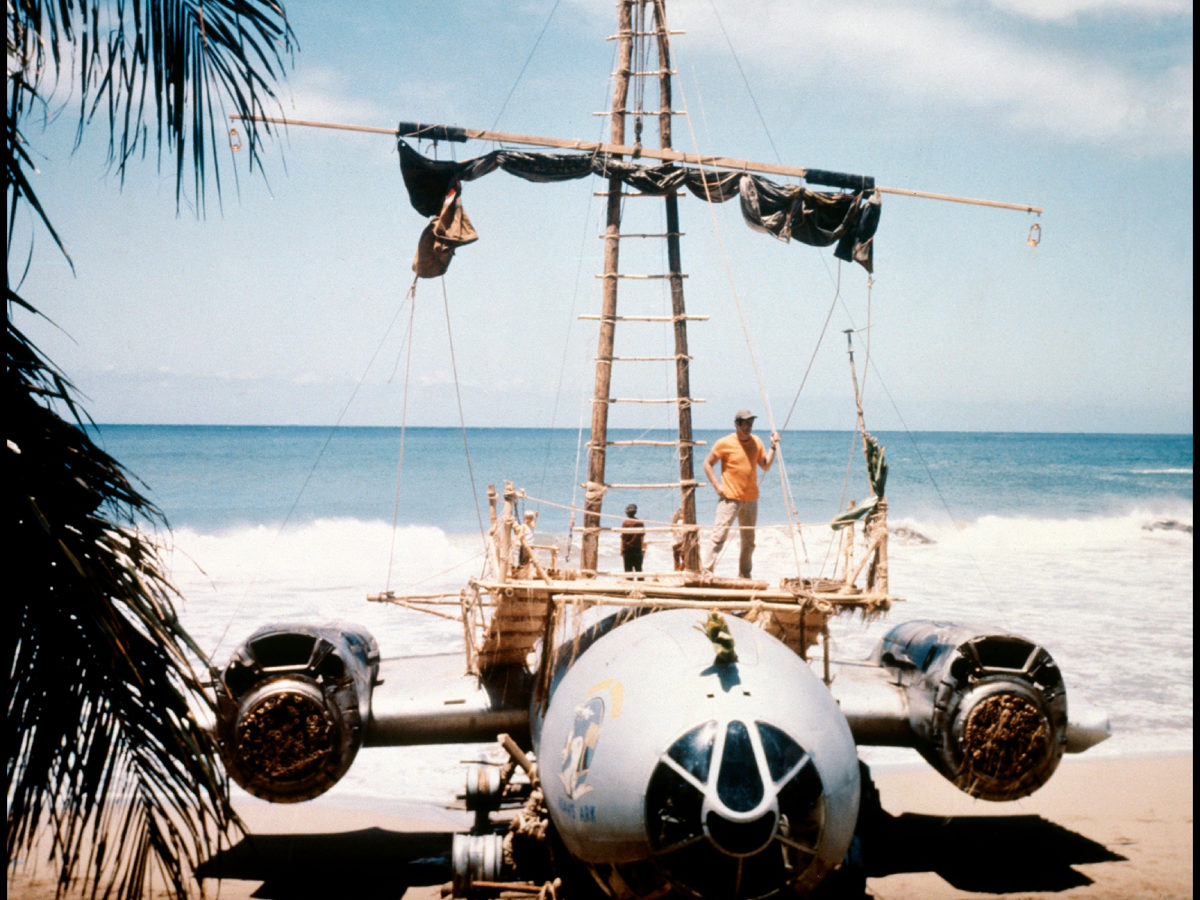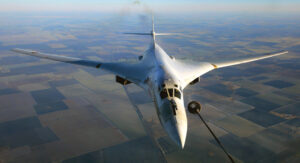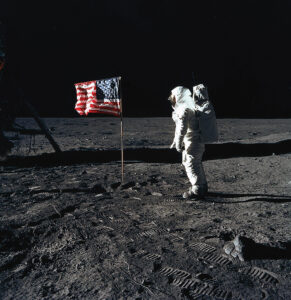In the mid- to late 1940s the drone and roar of aircraft piston engines faded and was replaced by the howl and scream of turbojets. Hollywood, in its never-ending search for cutting-edge entertainment, snatched at the new era in aviation. Needle-nosed jets with sweptback wings were an irresistible draw to those raised on space heroes like Flash Gordon and Buck Rogers. Some films that emerged from the postwar dream factories were slapdash affairs, while others were major efforts to depict a world hardly imagined by middle-class American audiences.
Howard Hughes’ costly fiasco Jet Pilot, filmed in the late 1940s, became a laughingstock upon its release in 1957, when the aircraft it featured were hopelessly outdated. But the superb Strategic Air Command of 1955 was as fine a work of the filmmaker’s art as has ever touched the silver screen. In this article we’ll revisit a few old favorites, discover a couple of virtually forgotten films and explore others that deserve more appreciation than they received when they first appeared in theaters.
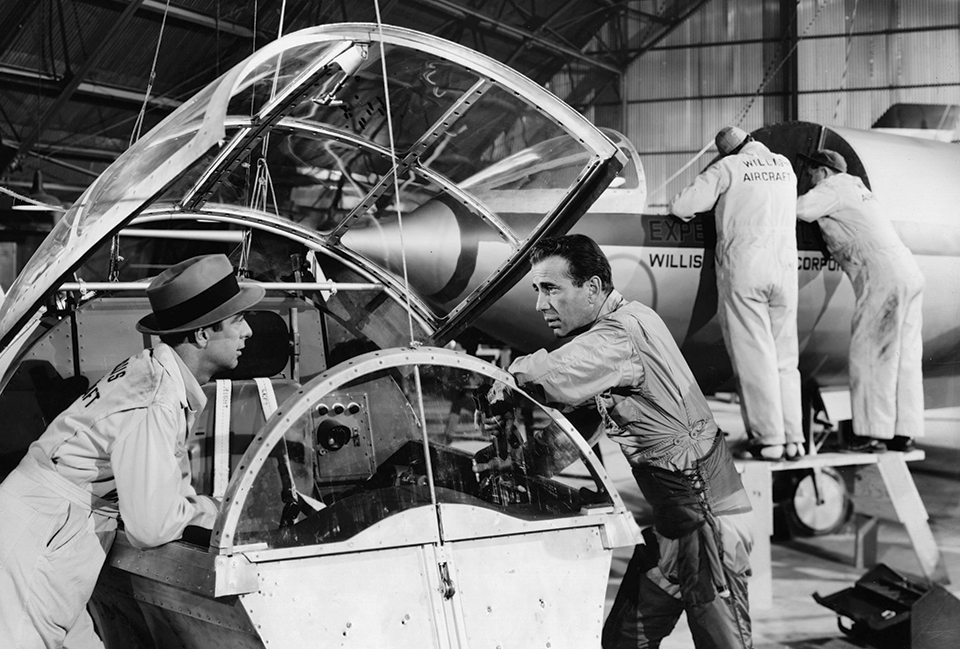
Chain Lightning, released by Warner Bros. in 1950, is the story of former B-17 pilot Matt Brennan (Humphrey Bogart) and hard-nosed millionaire aircraft designer Leland Willis (Raymond Massey) joining forces to test the new Willis JA-3 supersonic jet. Willis hopes to impress the Air Force with a nonstop flight from Nome, Alaska, to Washington, D.C., via the North Pole. Test pilot Carl Troxell (Richard Whorf) wants to design a safer escape pod–equipped version, the JA-4, but Brennan is unconvinced it will work. Brennan successfully flies the JA-3 from Nome to Washington, but learns that Troxell has been killed testing the JA-4. Despite his reservations about the escape system, Brennan takes up another JA-4 and purposely ejects from it during a demonstration flight in front of Air Force officials to prove the new jet is safe.
The starring aircraft is sleek with a needle nose, just as American audiences would expect at the time. It has no air intakes, but that detail seems to go unnoticed. Some footage was shot on location at southern California’s Muroc Army Air Base, now Edwards Air Force Base.
Toward the Unknown is an almost-forgotten 1956 film starring William Holden as Major Lincoln Bond, a Korean War ace who had been captured by the North Koreans and, after more than a year of torture, forced to sign a confession. Bond goes to Edwards AFB seeking work as a test pilot, but Brig. Gen. Bill Banner (Lloyd Nolan) is not convinced he is trustworthy and blocks his appointment. Banner finally allows Bond to fly routine support and chase missions for other pilots. Bond soon pilots the new Gilbert XF-120 fighter, which the Air Force is considering accepting for production, and realizes it is structurally unsound. He tries to convince Banner that the jet is unsafe, but the general doesn’t believe him.
After Bond saves Banner when his drogue chute deploys prematurely during a test flight, they learn to trust one another. Bond is given the coveted assignment to fly the new X-2 rocket plane, though Banner wants to fly it himself. Without orders, Bond takes the plane to full power, throwing it out of control. He barely survives the bailout, leaving Banner to realize that flight testing is for younger men.
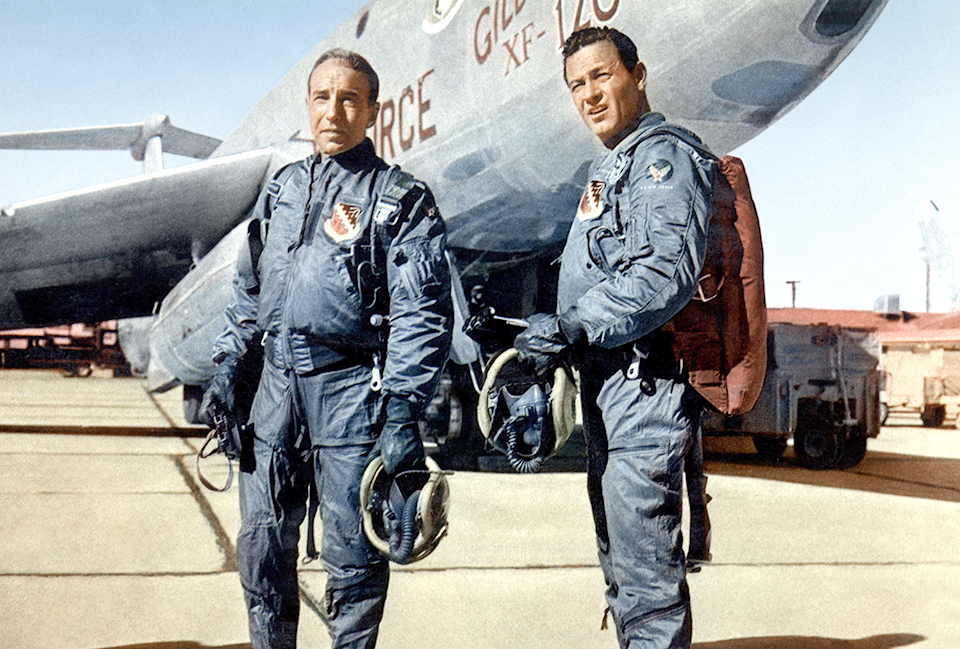
Toward the Unknown was almost exclusively filmed at Edwards, home of the Air Force Flight Test Center. One of the best scenes used process mockups and miniatures to show Bond flying his Lockheed F-94 Starfire chase plane directly behind Banner’s F-94. When Banner’s drogue chute deploys, making the aircraft virtually impossible to fly, Bond pushes the wingtip tank of his plane into the center of the chute, forcing it to collapse and enabling Banner to land safely.
The film features a virtual inventory of aircraft the USAF was testing and flying in 1956. The Convair C-131 Samaritan and F-102 Delta Dagger, Douglas B-66 Destroyer and North American F-86 Sabre are seen in flight and on the ground. A rare Boeing YKB-29T, an experimental tanker version of the Superfortress, fuels the North American F-100 Super Sabre and McDonnell F-101 Voodoo. The Martin XB-51, which portrays the XF-120, was not accepted by the Air Force for production, so this film offers rare views of it in flight. The Bell X-2 rocket plane also appears, along with the rapier-like Douglas X-3 Stiletto and D-558-2 Skyrocket in which Scott Crossfield broke Mach 2 in 1953.
The Air Force was experimenting with “zero length takeoffs” using rocket sleds while Unknown was filming, and a Republic EF-84G Thunderjet is seen testing the system. A look at the background reveals a Boeing B-47 Stratojet, Beech C-45 Expeditor, Convair B-36 Peacemaker and North American B-45 Tornado. Audiences were further treated to an early demonstration by the Air Force Thunderbirds in their F-84F Thunderstreaks.
Noted Air Force historian Walter Boyne gives Toward the Unknown high marks. “This picture was made by the airplanes that appeared in it and is worth seeing just for the XB-51,” he commented.
Howard Hughes, whose epic 1930 film Hell’s Angels focused on World War I aviation, made a major leap into the motion picture business when the jet age began. The result, for what it’s worth, was 1957’s Jet Pilot. It was vintage Hughes, with an unbelievable plot, big budget overruns and spectacular aerial photography.
Colonel Jim Shannon (John Wayne) is ordered to play host to defecting Soviet pilot Lieutenant Anna Marladovna, played by Janet Leigh three years before her shower scene in Psycho. Shannon falls in love with Marladovna and marries her in order to keep her from being deported. When his wife is accused of being a spy, Shannon sneaks her into a Lockheed T-33 Shooting Star and takes her to Siberia. After a long series of unbelievably casual interrogations, the Soviets convince Shannon to test their version of a “parasite” fighter. Anna helps her husband escape back to the States, bringing the story full circle.
Principal photography was completed in 1949, but the Red Scare and McCarthyism convinced RKO Pictures to keep Jet Pilot on the shelf for eight years. By the time audiences saw it in 1957, the aircraft were obsolete.
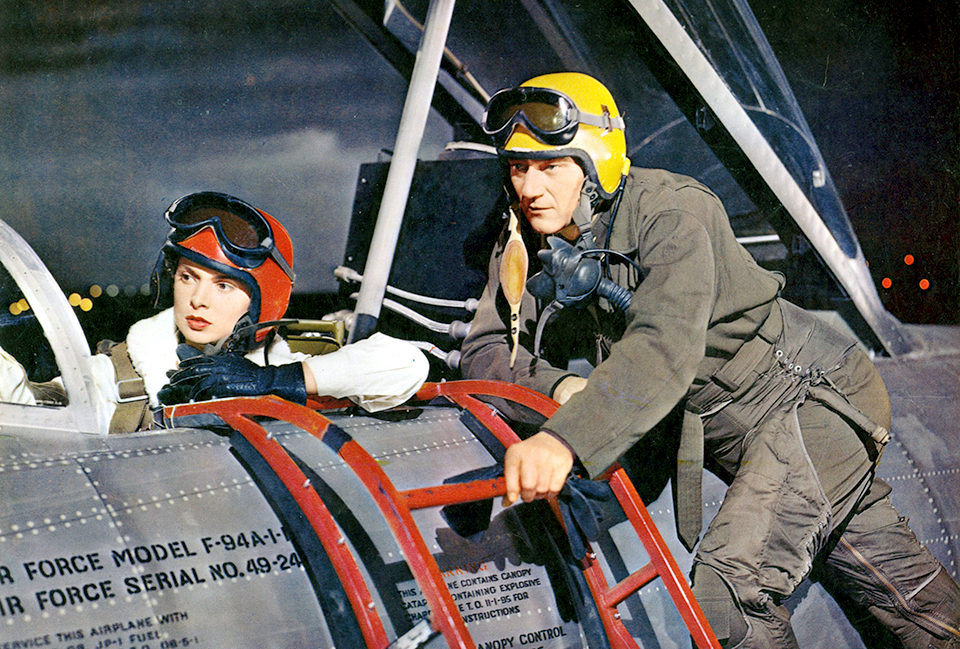
Jet Pilot was shot on location at George Air Force Base in Victorville, California, and Edwards. Eager to promote itself, the Air Force willingly offered assistance in base facilities, aircraft and personnel, including Major Chuck Yeager, who just a year earlier had exceeded Mach 1 in the Bell X-1. The naturally adventurous Yeager had initially been thrilled at the prospect of mixing it up with Hollywood stars but ended up being disappointed. He never saw Wayne or Leigh. He did all the dangerous flying in an F-86 and spent his time at 15,000 feet being filmed by Paul Mantz in a B-25 camera plane. Director Josef von Sternberg told Yeager they needed the kind of flying that only he could do. In one shot, he dived into the overcast inverted at 12,000 feet with another pilot flying chase, then pulled out down on the deck. Then he reached Mach .92 in a vertical dive, and when he pulled out the g-forces tore the elevator off the tail, along with about a third of the horizontal stabilizer. Yeager’s wingman saw how low he was when the tail tore off and assumed he had crashed.
The X-1, with its wings and stabilizers painted white, served as the Soviet parasite fighter, dropped from a B-50 Superfortress. With Yeager at the controls, it was the last flight of the famed rocket plane. T-33s, painted to alter their silhouettes, stood in for Soviet Yak-12 fighters. To explain this, Shannon remarks, “It looks like a Soviet version of our T-33.”
Jet Pilot is a drama, but it might be more aptly described as a fantasy or comedy. American audiences must have spent more time laughing than watching. Regarding the film in general, the Korean War F-86 ace Colonel Ralph Parr said, “It’s a better movie for the planes than the story. It’s just too ridiculous.”
Screen legend Jimmy Stewart, who piloted B-24s during World War II, was back in the sky in Strategic Air Command (1955). The extravagant Technicolor production by director Anthony Mann and writer Beirne Lay Jr. (also a WWII combat veteran) exposed a world hardly imagined by Americans. Released in the first decade of the Cold War, Command centers on former B-29 pilot turned professional baseball player Robert “Dutch” Holland (Stewart), who is married to Sally, played by America’s sweetheart June Allyson. Dutch is ordered to go on active duty in the new Strategic Air Command for 21 months. At first, he is resentful but, in time, feels a sense of duty to the job, the men and the planes.
Harry Morgan portrays a veteran sergeant who shows Dutch through the interior of a huge B-36 bomber. “What do you think of her, Colonel?” the flight engineer asks.
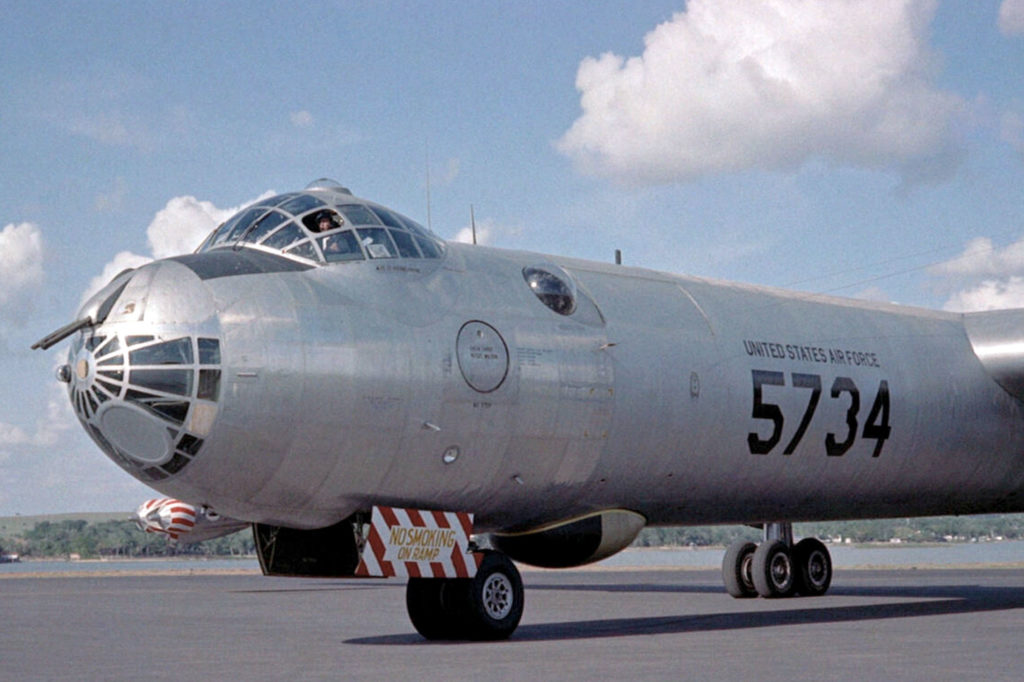
“She’s a battleship!” Dutch replies. Dutch soon becomes so dedicated to SAC that he puts his work ahead of his family, and drives himself to near exhaustion to complete a full deployment of a B-47 wing to Japan.
Carswell Air Force Base in Texas, home of the 7th Bomb Wing, was the location for most of the ground and flying sequences. The B-36 Peacemaker is seen in several flights both real and in miniature. Director of photography William Daniels was responsible for the beautiful cinematography.
Real-life former B-36 copilot Major Walter Douglas was at Carswell AFB when the movie was being filmed. “I watched as Paul Mantz in his B-25 camera plane followed the B-36 into the air,” Douglas recalled. “He had that plane right off the port wingtip and stayed with it all the way until they had the footage they needed.” Douglas was impressed by the final film. “It really made the B-36 look good,” he said. “That was a lot of airplane, and the movie did a good job of it.”
For the B-47 Stratojet sequences, Paramount made good use of Air Force aerial refueling footage. When Dutch is trying to land in bad weather at Kadena AFB on Okinawa, the camera shoots from over his shoulder to peer through a windscreen being swept by a single wiper. The cockpit mockup is now on display at the March Field Air Museum in Riverside, Calif. The aircraft exterior and interior scenes are so technically detailed that it wouldn’t be suprising
if the film was studied by Soviet intelligence.
On the tails of Command came another bomber epic, Bombers B-52 (1957), which used SAC’s massive Boeing B-52 Stratofortress as a backdrop for a battle of wits between a playboy pilot and a career sergeant. Karl Malden plays Master Sgt. Chuck Brennan, whose daughter Lois (Natalie Wood) is being romantically pursued by Colonel Jim Herlihy (Efrem Zimbalist Jr.). The Air Force is Brennan’s career and life, but he is also a devoted husband and father. Herlihy tries to appease Brennan but is unable to convince the sergeant that his intentions are honorable. While this is going on, the new B-52 is coming into service and the Air Force needs Brennan’s expertise.
A fire aboard a new B-52 over a remote area forces the crew to bail out. Brennan remains on board to try to save the ship but finally jumps, landing far from rescue. Herlihy finds him, and Brennan no longer protests the budding romance.
Directed by Gordon Douglas, Bombers B-52 was shot on location at March AFB and Castle AFB outside Merced, California. The Stratofortress was brand-new at the time, and the USAF was happy to display its newest hardware. Because the main character was a dedicated career sergeant, Time magazine called the movie a “$1.4 million want ad for Air Force technicians.”
Zimbalist remembered that he was awed by the huge bombers and the men who flew them. “A pilot took me up on a flight and I was just amazed at the complexity,” he said. “When we were on the runway he told me I could steer it over to the parking area. I said, ‘I can’t do that!’ But the pilot said, ‘Relax, just steer it like a car. There’s the wheel, and there’s the brake.’ So I did. The smoothness was amazing. That enormous machine handled like a bicycle.” Zimbalist did not receive much instruction about how to appear experienced at the controls. “I just sat there and did what they told me.”
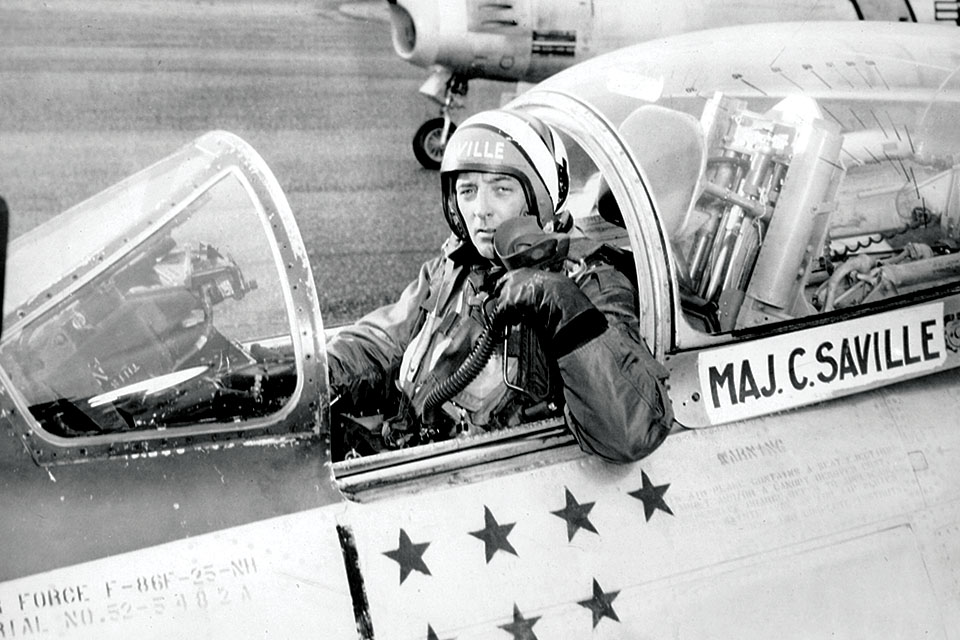
The skies over Korea are the setting for The Hunters (1958), a raw account of life and death in the air based on James Salter’s autobiographical novel. Robert Mitchum is Major “Iceman” Saville, a confident former WWII fighter ace. Saville is second-in-command of an F-86 Sabre squadron in Korea under Colonel “Dutch” Imil, played by Richard Egan. In a complex plot involving extramarital affairs and overenthusiastic fighter pilots, The Hunters unfortunately deviates from Salter’s classic work. But there are some compelling aerial combat sequences between the American F-86s and a top North Korean ace dubbed “Casey Jones” in a MiG-15. The F-86s were part of an operational squadron, and most of the aerial sequences were shot over Arizona, Nevada and California. The MiG-15s were played by F-84F Thunderstreaks painted in Communist markings.
In 1983, Philip Kaufman directed The Right Stuff, based on Tom Wolfe’s bestselling account of the early days of flight test and the Mercury Program. While technically superb, The Right Stuff is about as historically accurate as an Abbott & Costello comedy.
Chuck Yeager (Sam Shepard) is first seen in Pancho Barnes’ Happy Bottom Riding Club on the outskirts of Muroc Army Air Base in the Mojave Desert. When the current X-1 test pilot, Chalmers “Slick” Goodlin, demands an exorbitant fee for breaking the sound barrier, the Army finds itself in need of a pilot. One officer points across the room: “That guy over there, Yeager. Some kind of war hero. Shot down five Germans in one day.”
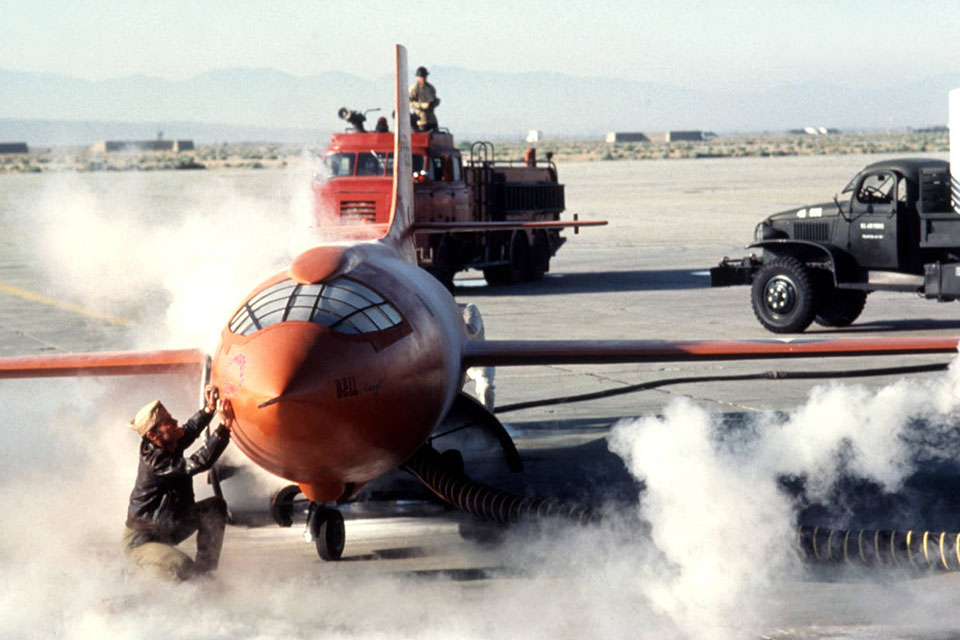
In reality, Yeager was at the time doing advanced flight-testing for the Army Air Forces at Wright Field in Ohio, under the aegis of Colonel Albert Boyd. Boyd chose Yeager and Bob Hoover as pilots, Captain Jack Ridley as flight engineer and Major Bob Cardenas as the B-29 mother ship pilot and project manager (see “Dropping the Orange Beast,”). Cardenas, a highly skilled engineer, former B-24 combat pilot and head of the Bomber Test section at Wright, doesn’t appear in the film. Ridley was one of the most brilliant engineers in the Air Force, but his film character is just a recurring sidekick to Yeager, doing little more than dispensing Beeman’s gum.
Edwards Air Force Base was the setting for most of the X-1 and later flight sequences. The X-1 aerial shots were filmed using models, as the FAA refused to allow the Ladd Company to drop the full-scale mockup from Fifi, the Confederate (today Commemorative) Air Force’s B-29. Yeager’s final appearance in the film involves a 1962 record-setting flight while he was commandant at the USAF Aerospace Research Pilot School at Edwards. In a modified Lockheed NF-104 Starfighter, he attempted to break the 114,000-foot altitude record set by a Soviet pilot. Contrary to the film’s portrayal, Yeager did not “steal” the plane. Jack Ridley is there to dispense more Beeman’s gum but had actually been dead since 1957. The Starfighter is a rare aircraft in film and very worth seeing in flight. The movie aircraft was an F-104G that lacked the external rocket booster on Yeager’s NF-104.
The ejection sequence is accurately portrayed, if a bit confusing. Yeager’s seat rig had an explosive charge to blast it out of the plane. While he was falling alongside the seat, it’s still-glowing end struck him and broke open his helmet, severely burning his face and hands.
All in all, only The Right Stuff’s aerial sequences have real value. The movie holds up even if viewed as a fictional dramatization of historical events , but it should not be taken too seriously. The one thing it can be commended for was its effect on the American public. After the film’s October 1983 release, Yeager and the Mercury astronauts found themselves in the spotlight again. Suddenly astronauts most Americans had forgotten or ignored for nearly 20 years were again sought out for public appearances and autographs. I count myself among those who were profoundly affected by the story, and its effect has not faded to this day.
Frequent contributor Mark Carlson is the author of Flying on Film: A Century of Aviation in the Movies 1912-2012, which is recommended for additional reading.
This feature originally appeared in the September 2019 issue of Aviation History. Subscribe here!

